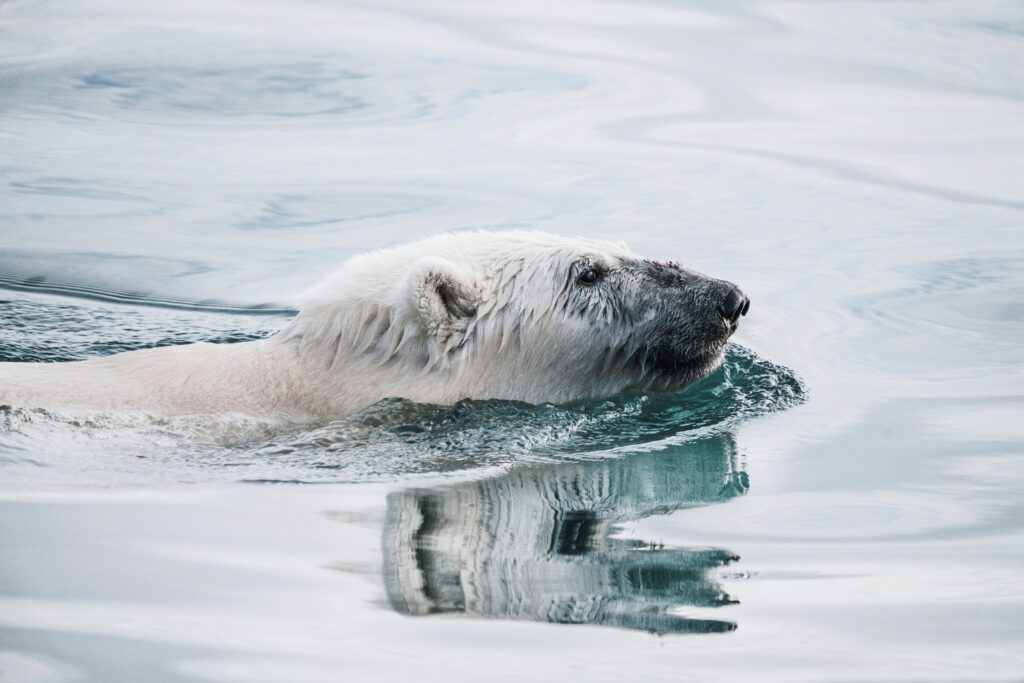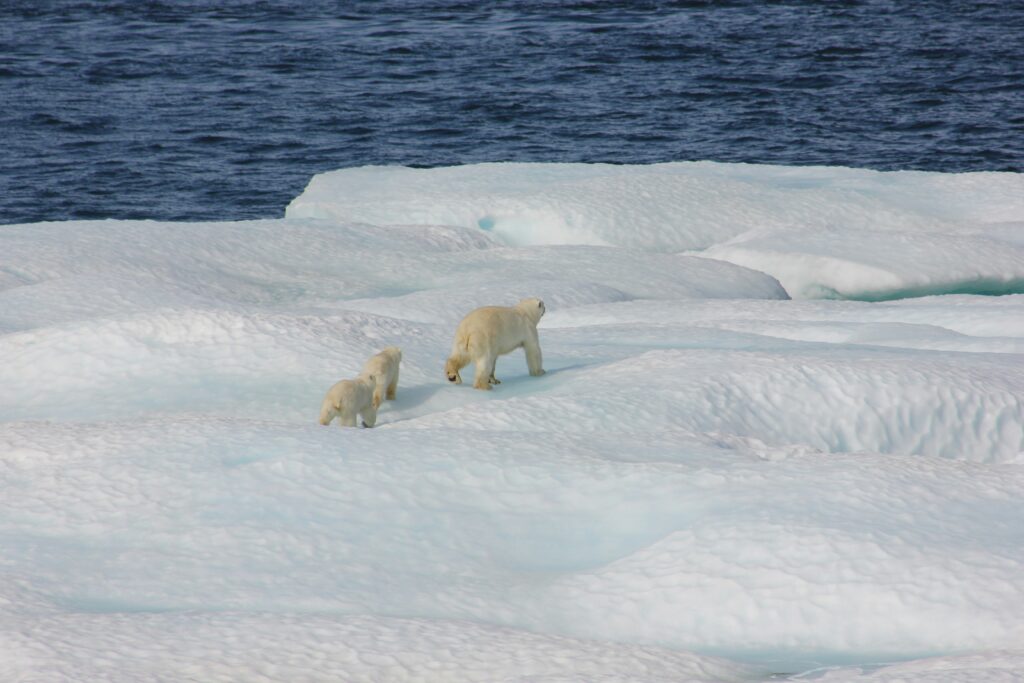
Polar Bears
Polar bears are the image we all associate with the Arctic regions. And rightly so, since this is the only area where they are found.
Moreover, they have also become the subject used by many of the climate change advocates. But I will cover this in a separate post.
For now, I would like to share the following facts about polar bears:
| Polar bears are classified as marine mammals. | They are the only bear species to be classified as a marine mammal. This is because they rely on the sea ice of the Arctic Ocean for survival. It is their habitat for hunting, breeding, roaming and sometimes for denning. |
| Polar bears are the largest four-legged predator | Adult males can weigh up to 600 – 800 kgs. (Females weigh about half this). An adult male may reach a height of over 3 metres (10 feet) |
| A polar bear’s skin is black, and their fur might appear white, but it’s not! | The hairs on a polar bear are actually hollow, which makes it translucent, and so only appears white due to the reflection of light. Polar bears like to keep their fur clean by taking a swim or rolling in the snow, particularly after feeding. This is to maintain the insulation properties of their fur. |
| They feed mainly on seals, and are incredibly patient when hunting | A polar bear can smell its prey up to 1 km away. However, less than 2% of polar bear hunts are successful. This is despite a wide range of strategies such as breaking into seal pupping dens, waiting at breathing holes or at water’s edge, or stalking seals that have hauled out to rest on the ice. Polar bears can eat over 45 kg of blubber in one sitting! While they are at the top of the Arctic food chain (or maybe because they are at the top) they rely on the health and efficiency of the entire food chain |
| Polar bears are great swimmers, and their foot pads have no-slip treads | They can swim for long distances for days on end and can reach speeds of up to 10 kph.Their large paws are about the size of a dinner plate, and are ideally suited for paddling, and they use their hind paws as a rudder. On the bottom of each paw they have a black foot pad, which is covered by small, soft bumps which grip the ice and help stop the bear from slipping. |
| Polar bears mate in the Spring (April to June) and go ashore to den in October to November | After feeding throughout the winter and spring a pregnant female bear digs a cave in the snow, where she will give birth to one or two cubs. They will stay in the den until around April of the following year, when they all emerge onto the ice. The cubs stay with their mother for two years. Read more about polar bear denning here. |
| “Grolar bear”? “Pizzly bear” ?!?! | Genetic testing has revealed that there are polar bear – grizzly bear hybrids. They are usually birthed by polar bear mothers and so are raised as and behave like polar bears. Considering that polar bears evolved from brown bears this is not surprising. |
Information about polar bear population numbers and locations will be shared in a later post about the impact of climate change on polar bears.


Sources for the above information are: